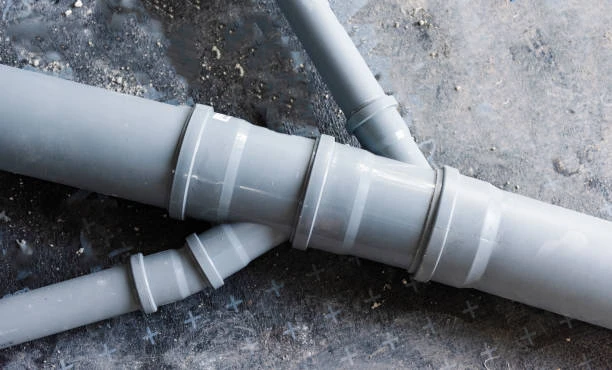In a landmark case that has sent shockwaves through the plumbing industry, a group of consumers has initiated a class action lawsuit against major PVC pipe manufacturers. The lawsuit alleges price-fixing conspiracies that have artificially inflated costs for consumers and businesses alike. As the legal proceedings unfold, many industry professionals and consumers are starting to reconsider their material choices, particularly turning their attention towards CPVC fittings as an effective alternative to traditional PVC products.
Understanding the Allegations
The class action lawsuit targets several prominent manufacturers, including Core & Main, Ferguson, and Frontline, accusing them of engaging in illegal price-fixing activities over several years. This alleged collusion has raised significant concerns about ethics and competition within the plumbing market, leading many contractors and builders to seek alternatives that provide both quality and cost-effectiveness.
The Implications of Price Fixing
Price-fixing not only harms consumers by inflating prices but also stifles competition and innovation in the market. For contractors who depend on affordable and reliable materials, the ramifications can be severe. The ongoing lawsuit serves as a crucial reminder of the importance of transparency and fairness in pricing strategies.
Why CPVC Fittings Are Gaining Popularity
As the fallout from the lawsuit continues, many in the plumbing community are looking at CPVC fittings (Chlorinated Polyvinyl Chloride) as a viable substitute for PVC pipes and fittings. Here are some reasons why CPVC is becoming increasingly popular:
1. Temperature Resistance
One of the standout features of CPVC fittings is their ability to withstand higher temperatures compared to PVC. With a temperature tolerance of up to 200°F, CPVC is ideal for hot water applications, making it a smart choice for a wide range of plumbing systems.
2. Corrosion Resistance
Unlike traditional PVC, which can degrade over time, CPVC fittings offer exceptional resistance to corrosion and chemical exposure. This durability means less frequent replacements and repairs, ultimately providing better value for consumers and contractors alike.
3. Ease of Installation
CPVC fittings are lightweight and easy to handle, allowing for quicker installation processes. This ease of use can lead to reduced labor costs and faster project completion times, making CPVC a favorite among contractors who value efficiency.
4. Longevity and Durability
The lifespan of CPVC fittings often exceeds that of PVC, resulting in fewer maintenance issues and lower long-term costs. This durability makes CPVC a wise investment for both residential and commercial plumbing systems.
5. Environmental Advantages
With increasing awareness of sustainability, CPVC fittings are emerging as a more environmentally friendly option. Their longer lifespan and reduced need for replacements contribute to less waste and a lower carbon footprint.
Market Dynamics Post-Lawsuit
The allegations of price-fixing could lead to significant changes in the market dynamics for PVC and CPVC fittings. If the lawsuit proves successful, it may compel manufacturers to reassess their pricing practices to foster a more competitive environment.
Contractors and consumers might begin sourcing more CPVC fittings, leading to greater demand and increased innovation within the CPVC segment of the plumbing industry. The potential for increased competition can drive prices down, benefiting consumers and encouraging manufacturers to improve product quality and sustainability.

How CPVC Can Benefit Consumers
For consumers facing rising prices due to alleged price manipulation in the PVC market, switching to CPVC fittings can be a financially savvy decision. Here’s how CPVC stands out as a superior choice:
- Cost-Effectiveness: Although initial costs for CPVC fittings may be higher than those for PVC, their durability and low maintenance requirements can result in substantial long-term savings.
- Reliability: CPVC fittings deliver consistent performance under various conditions, ensuring plumbing systems function smoothly without frequent repairs.
- Adaptability: The versatility of CPVC fittings allows them to be used in numerous applications, from residential plumbing to complex industrial installations.
Industry Response and Future Trends
As the class action lawsuit unfolds, the plumbing industry is likely to see heightened scrutiny regarding pricing practices. This scrutiny may encourage manufacturers to prioritize transparency and ethical pricing, ultimately benefiting consumers.
The growing trend toward CPVC fittings could also stimulate innovation among manufacturers. As competition increases, we may witness advancements in the production processes and applications of CPVC materials, solidifying their position in the market as a reliable alternative to PVC.
Conclusion
The allegations against major PVC pipe manufacturers regarding price-fixing have sparked vital discussions about ethics, competition, and consumer rights in the plumbing industry. As contractors and consumers reevaluate their choices, CPVC fittings present a compelling solution with numerous advantages, including superior durability, heat resistance, and environmental benefits.
By choosing CPVC fittings, consumers not only make a sound investment for their plumbing needs but also contribute to a more competitive market landscape. It’s crucial for all stakeholders in the industry to stay informed about ongoing developments and consider all available options in light of these significant changes.

FAQs
- What are CPVC fittings made of?
CPVC fittings are made from Chlorinated Polyvinyl Chloride, a thermoplastic material known for its strength and heat resistance. - How do CPVC fittings compare to PVC fittings?
CPVC fittings are better suited for hot water applications as they can withstand higher temperatures and pressures than PVC fittings. - Can CPVC fittings be used for both hot and cold water?
Yes, CPVC fittings are designed for use in both hot and cold water plumbing systems. - Are CPVC fittings environmentally friendly?
Yes, CPVC fittings are considered environmentally friendly due to their longevity, which reduces waste and resource consumption. - What is the installation process for CPVC fittings?
CPVC fittings are installed using solvent cement, similar to PVC, ensuring a secure and leak-free connection.